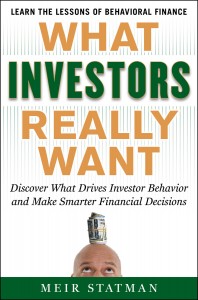Pat Allen of RockTheBoatMarketing is one of my “go to” people when I’m looking for information on how asset managers use  social media. If you’re interested in tracking this topic, follow Pat’s Twitter feed at RockTheBoatMKTG and check out her Twitter list of investment managers. If your interests focus more on financial advisors, then Pat’s AdvisorTweets Twitter account is for you.
social media. If you’re interested in tracking this topic, follow Pat’s Twitter feed at RockTheBoatMKTG and check out her Twitter list of investment managers. If your interests focus more on financial advisors, then Pat’s AdvisorTweets Twitter account is for you.
In her guest post below, Pat suggests that investment analysts and portfolio managers need to learn how to do research using social media or risk missing–or being late to obtain–information that influences the prices of securities.
Investment analysts and social media
By Pat Allen
Institutional analysts and investors rely most on information that comes directly from companies.
This was a finding in a survey conducted last year by the Brunswick Group that I remember reading and finding unremarkable. And yet it’s increasingly obvious that corporate information can be relied upon for a company’s plans and intentions—but how an organization moves forward will be influenced by a marketplace reacting in real-time.
To be sure, that complicates things and not just for corporations pursuing business agendas but also for analysts and investors trying to assess companies’ prospects.
Social media is messy. There are zillions of media and networking sites and blogs, lots of noise and plenty of false signals. Still, we think it’s a faulty investment decision that’s made today without consideration for what consumers and influencers are saying.
Gap’s October 4 introduction of a new logo is a recent case in point.
In an October 7 essay on the Huffington Post, Gap North America president Marka Hansen explained that the company’s product selection and retail presence was evolving.
“The natural step for us on this journey is to see how our logo–one that we’ve had for more than 20 years–should evolve. Our brand and our clothes are changing and rethinking our logo is part of aligning with that,” wrote Hansen.
“The natural step for us on this journey is to see how our logo–one that we’ve had for more than 20 years–should evolve. Our brand and our clothes are changing and rethinking our logo is part of aligning with that,” wrote Hansen.
Not so long ago a company executive might have mentioned a new logo on a conference call. If the company’s marketing was believed to be stale and a growth inhibitor, a rebranding plan might have bolstered investor confidence–if only temporarily–prior to the market’s reaction to the change.
In thinking about this post, I flashed back to Peter Lynch’s One Up on Wall Street: How to Use What You Already Know to Make Money in the Market. I was pretty green when I read that book but even then I was skeptical about Lynch’s thesis. Listen to what shoppers said at one store in one mall and invest based on that? I had my doubts and there was something about it that I found condescending. Surely that’s not how professional investors did it?Institutional analysts and investors rely most on information that comes directly from companies.
But Lynch’s recommended approach foreshadowed what is today called online listening. The difference today is that the vast majority of social media sites are architected to serve as databases—easy for interested parties to query, filter and subscribe to for efficient listening and ongoing temperature-checking.
Company information, primary market research, real time subscription information services, analyst research, the business media—all are inputs that ranked higher than “new media” in the 2009 Brunswick research into what influences analysts’ decisions or recommendations. New media, defined as blogs, message boards and social networking sites, were consulted by just 4% of respondents.
The next time such research is conducted we’d expect the monitoring of new media to soar as professional investors learn more about social influence.
Pat Allen is a Chicago-based digital marketing strategy consultant whose Rock The Boat Marketing firm helps investment companies think through what they do on the Web. Pat also operates AdvisorTweets.com, a site that aggregates the tweets of U.S.‐based financial advisors.
 managing director of global strategy for Absolute Strategy Research (ASR), a London-based macroeconomic research firm. He spoke during the Q&A session following “Europe: ‘This could be Heaven or this could be Hell,’ ” a March 17 presentation to the Boston Security Analysts Society.
managing director of global strategy for Absolute Strategy Research (ASR), a London-based macroeconomic research firm. He spoke during the Q&A session following “Europe: ‘This could be Heaven or this could be Hell,’ ” a March 17 presentation to the Boston Security Analysts Society.








